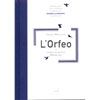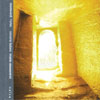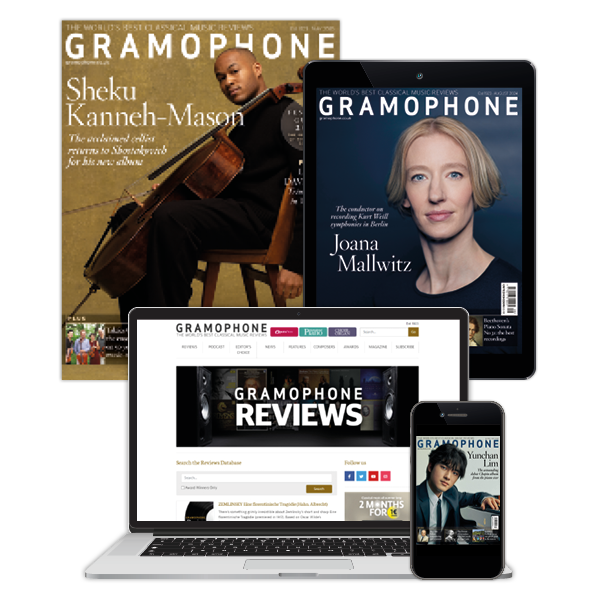Monteverdi (L') Orfeo
Two anniversary recordings of the first operatic masterpiece go head to head
View record and artist detailsRecord and Artist Details
Composer or Director: Claudio Monteverdi
Genre:
Opera
Label: Glossa
Magazine Review Date: 11/2007
Media Format: CD or Download
Media Runtime: 0
Mastering:
Stereo
DDD
Catalogue Number: GES920913-E

Tracks:
| Composition | Artist Credit |
|---|---|
| (L')Orfeo |
Claudio Monteverdi, Composer
(La) Venexiana Claudio Cavina, Shepherd III, Soprano Claudio Cavina, Zedlau Claudio Monteverdi, Composer Cristina Calzolari, Proserpina, Soprano Emanuela Galli, Euridice, Soprano Francesca Cassinari, Nymph, Treble/boy soprano Giovanni Caccamo, Shepherd I, Tenor José Maria Lo Monaco, Speranza, Soprano Makoto Sakurada, Shepherd II; Spirit I, Tenor Marina De Liso, Messenger (Silvia), Soprano Matteo Bellotto, Plutone, Bass Mirko Guadagnini, Orfeo, Tenor Salvo Vitale, Caronte, Bass Vincenzo Di Donato, Apollo, Tenor |
Composer or Director: Claudio Monteverdi
Genre:
Opera
Label: Naïve
Magazine Review Date: 11/2007
Media Format: CD or Download
Media Runtime: 103
Mastering:
Stereo
DDD
Catalogue Number: OP30439

Tracks:
| Composition | Artist Credit |
|---|---|
| (L')Orfeo |
Claudio Monteverdi, Composer
Anna Simboli, Proserpina, Soprano Anna Simboli, Euridice, Soprano Antonio Abete, Plutone, Bass Claudio Monteverdi, Composer Concerto Italiano Furio Zanasi, Orfeo, Tenor Luca Dordolo, Apollo, Tenor Monica Piccinini, La Musica, Soprano Rinaldo Alessandrini, Conductor Sara Mingardo, Speranza; Messenger, Soprano Sergio Foresti, Caronte, Bass |
Author: Richard Lawrence
Here, to mark Orfeo's 400th birthday, is the keenly awaited new recording from Concerto Italiano and Rinaldo Alessandrini; and here, too, is a new version from La Venexiana and Claudio Cavina. For the genesis of the opera and for a comparison of selected recordings I would refer interested readers to my “Event” and “Collection” articles (4/06 and 5/07 respectively). As a continuation of the latter, suffice it to say that, with one or two exceptions, the additional accompaniments and general tinkering that so disfigured some earlier accounts find no place here.
In each case, the discs come slotted into a hardback book: CD-shape for Naïve, “portrait” format for Glossa. Both recordings are at modern pitch, and both transpose sections of the infernal scenes down a fourth, in accordance with present-day theories, not universally accepted, about the implications of the clefs known as chiavette. The differences are manifest from the start, Alessandrini preferring the written pitch of the threefold Toccata to the more usual transposition up a tone. Then Cavina launches the Prologue, the ritornello at a dignified and comfortable speed. The four-bar phrase takes 20 seconds: Alessandrini races through it in an astonishing eight seconds, with an irritating reining-in at every final cadence.
Both Piccinini and Galli deliver the Prologue in a way that compels one's attention without grabbing it. Galli is particularly fine, with a long drawn-out “Io” at “I am Music” and “I with a golden lyre”, and a beautifully shaped last stanza, where Music commands silence.
Cavina has the edge, too, in the choral dances of Act 1. His reading of “Vieni Imeneo” and “Lasciate i monti” is natural and unforced, whereas, in the latter, Alessandrini follows an unusually slow “Qui miri il sole” with a ritornello at breakneck speed, reinforced by thumps from the percussion on the first beat of every bar.
The jollifications continue in Act 2. Cavina has the “violini piccioli” and the recorders, and the ritornello to Orpheus's aria, played offstage. Even granting that the rubrics in the score are a record of the first performance and not necessarily an instruction, it's odd of Alessandrini to ignore them. Odder still is his phrasing of the aria, “Vi ricorda”, taken very fast with the bars in 3/4 virtually indistinguishable from those in 6/8. Cavina is eccentric in a different way, applying rubato> to the upbeats to two of the ritornelli.
When the Messenger arrives, the pastoral celebrations cease for ever. De Liso and Mingardo are both superb in their account of Eurydice's death, narrating freely and flexibly as though for the first time. Orpheus's response, where he vows to rescue his wife or else remain with her in death, is equally fine on both recordings. Neither Guadagnini nor Zanasi has a voice as distinctive as, say, Anthony Rolfe Johnson or Nigel Rogers; but the combination of their baritonal tenor with a keen sense of the import of the words is just right.
For Acts 3 and 4 the action moves to the underworld, where the vocal honours continue to be evenly divided. As Hope, Mingardo delivers the famous quotation from Dante, “Abandon hope, all ye who enter here”, with a trillo on “entrate”; Lo Monaco sings it plain, but no less tellingly. She is accompanied by the buzzy tones of the regal: a pity, as it reduces the impact of the instrument's prescribed appearance a few seconds later. Foresti and Vitale are true basses who sing Charon's minatory utterances with appropriate relish.
Orpheus's set piece, “Possente spirto”, is famous for the written-out ornamentation of the voice-part, and for its instrumental obbligati. Both singers tackle the roulades fearlessly and with precision. Full marks, too, to the players: but where Cavina has straightforward antiphonal exchanges for the violins and the cornetts, Alessandrini indulges in echo effects. As I remarked in my “Collection” article, this is unlikely to have been Monteverdi's intention.
Orpheus has an ally in Proserpine, who persuades Pluto to allow him to return to earth with his bride. As the pair start on their journey, Orpheus praises his “omnipotent lyre”: Cavina's violins have more of a spring in their step than Alessandrini's. After Orpheus's fateful glance back, Eurydice expires. The moralising chorus of spirits, dark and trombony at the low pitch, is excellently done on both recordings.
Back on the plains of Thrace, Orpheus laments his fate before being taken up to heaven by Apollo. His misogynistic sentiments are vividly conveyed by both singers, Guagagnini perhaps with a little more venom than Zanasi. In the final Moresca, Alessandrini commits the solecism of including the cornetts and trombones, the instruments exclusively connected with the underworld.
As far as the singing and playing are concerned, there is little to choose between the two recordings. Despite his furious speeds, noisy percussion and mannered cadences, Alessandrini is well worth hearing. But he is trumped by Cavina, whose wonderful account goes straight to the top of the list of recommended recordings. Do not miss it.
Discover the world's largest classical music catalogue with Presto Music.

Gramophone Digital Club
- Digital Edition
- Digital Archive
- Reviews Database
- Full website access
From £8.75 / month
Subscribe
Gramophone Full Club
- Print Edition
- Digital Edition
- Digital Archive
- Reviews Database
- Full website access
From £11.00 / month
Subscribe
If you are a library, university or other organisation that would be interested in an institutional subscription to Gramophone please click here for further information.




